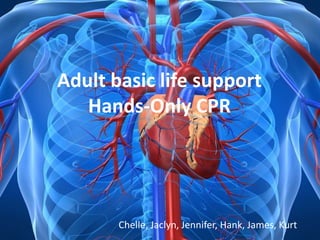The document provides instructions for performing adult basic life support, which includes checking the victim for response, opening the airway, and assessing breathing. If not breathing normally, the instructions describe performing chest compressions at a rate of 100-120 per minute and providing rescue breaths in a 30:2 ratio of compressions to breaths until emergency help arrives or the victim starts breathing on their own. The use of an automated external defibrillator is also recommended.




































